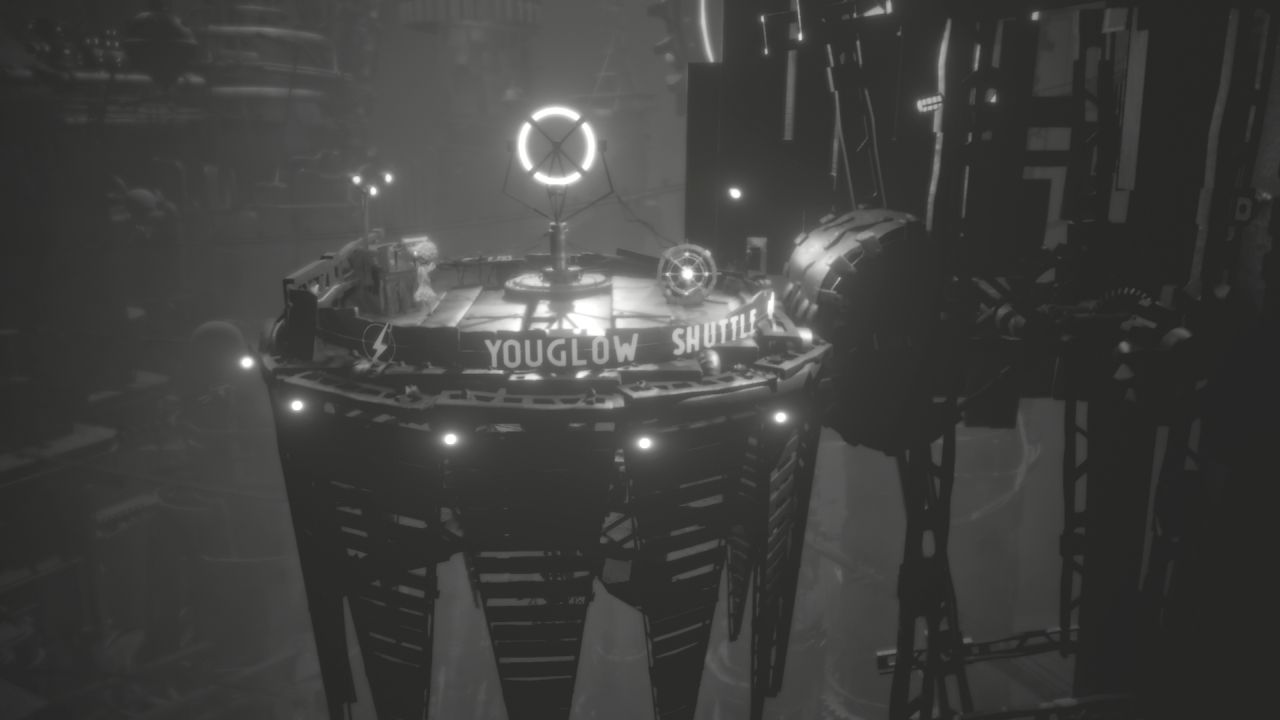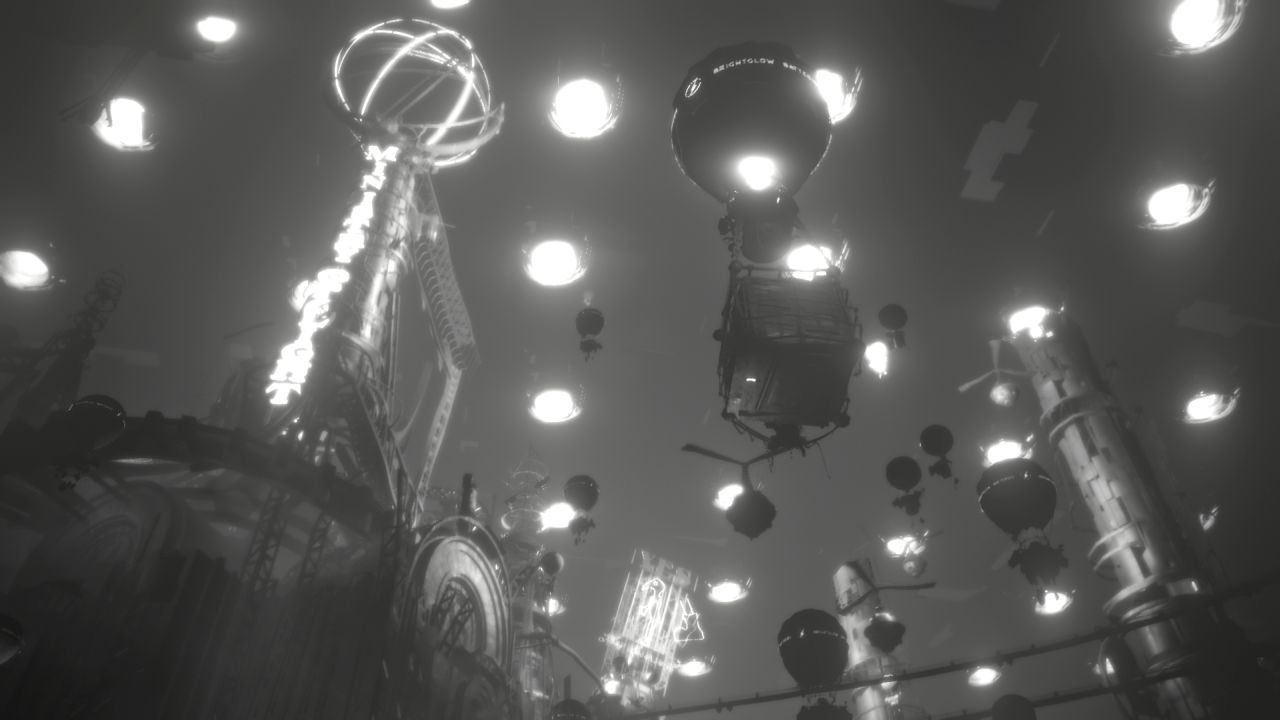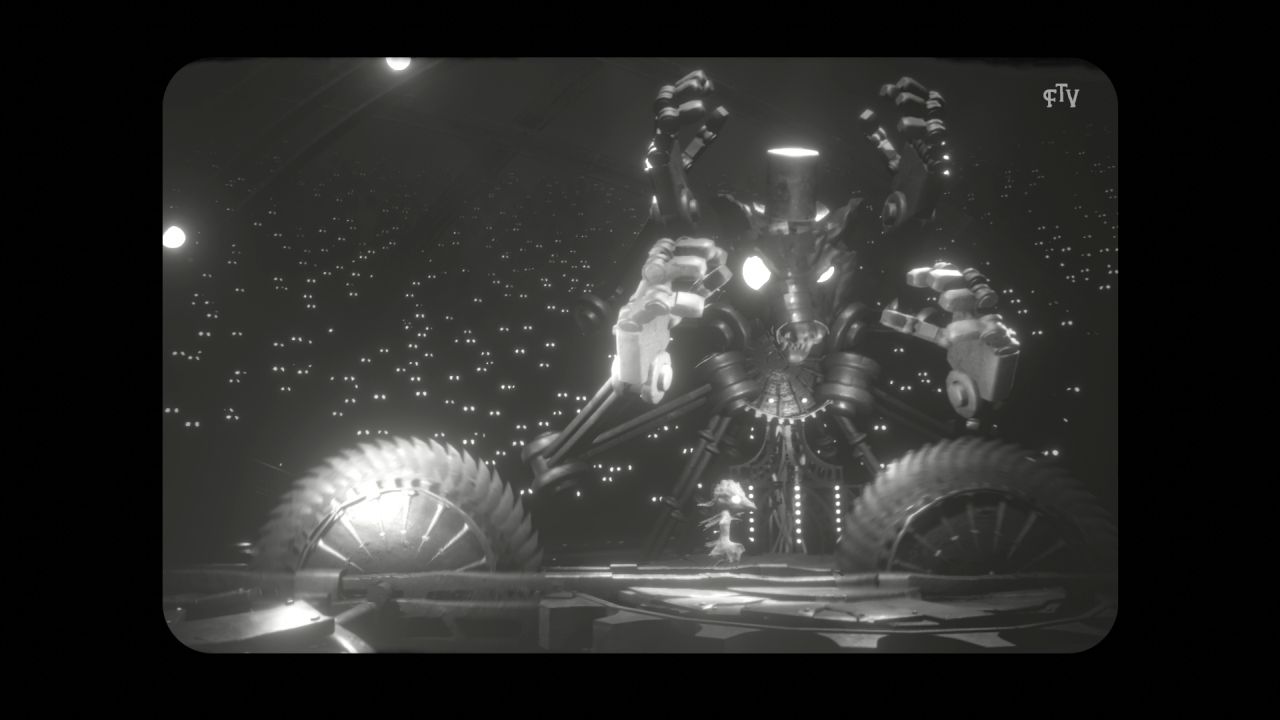White Shadows Review
More and more games are becoming a platform for social and political commentary, and not all can pull it off without a hitch. The commentary can be easily misconstrued or lack the subtlety needed to drive home the message. So, if you are going to attempt something like that, why not copy from the best? George Orwell’s two books, Nineteen Eighty-Four and Animal Farm, are both recognized for their take on humanities’ flaws. Both also happen to form the basic outline for White Shadows, an indie puzzle-platformer from Monokel that plays like Inside and Limbo. While the Orwellian themes provide a good starting point, and merge nicely with the monochrome retro-futuristic environments, White Shadows struggles to put everything in its rightful place.

In White Shadows you play as Ravengirl and get to explore a massive industrial cityscape. Like Orwell’s Animal Farm, this is a world populated by animals. It even uses the same slogan, ‘All animals are equal,’ despite the fact that birds (like our protagonist) are clearly far lesser creatures than the pigs, rats and wolves. Innocent baby chicks are ground up, en masse, to produce batteries that power various devices, from trains to elevators. Ravengirl is a bird in limbo; somehow she did not become battery fuel and yet she is too young to be one of the mother hens that lay eggs on demand. This makes her a target for elimination in a strange world.
Although the world is presented in black and white, it is well designed and looks great. The design is like what people from the early 20th century might think of the future, with enormous pipes, snaking rail systems carrying both cargo and trains, and odd flying contraptions. It makes particularly good use of vertical spaces with towers coming into view when the game automatically pans the camera up and down. The retro theme is reinforced with the use of classical music, silent-movie presentation, and old-timey fonts, which does make it come across as a world lost in time. Like the game Limbo, it also uses sound carefully with lots of silence, followed by distant clattering and jarring rattles from passing trains. When this efficient world design is combined with the Orwellian themes, it becomes alluring.

The game functions like a basic 2.5D platformer when exploring. Ravengirl has the ability to move, jump, and interact/drag things across a 2D plane in a fully 3D world. There are some ladders to climb and moving platforms to utilize. Occasionally Ravengirl will need to duck under moving hazards or hide behind shadows to avoid hostiles. The jumping can be a bit clumsy though, as a small run-up is required to get maximum distance and some platforms are too narrow or oddly placed. It all functions well enough, but there is not much here to learn.
Puzzles are too simple and the platforming is too easy. There was only one section where a puzzle solution was not immediately obvious; it required backtracking a short distance to find a box to push under a lever. Another challenge involved concentric rings that needed to be aligned, but this was both trivial and out of place. Since no puzzle requires much thought, progression is both steady and boring. The platforming itself is only rarely tedious, due mostly to save points that can be far apart. By far the hardest navigational challenge occurs when the game becomes a silly obstacle course for too long.
Not long after the obstacle course, the story falters with an unnecessary and untimely dump of narrative content. In chapter four, voiceless characters act out a stage production for Ravengirl to explain some facets about the world and its inhabitants, but it is really all done for the player’s sake. Half of this context is not necessary, having already been explained well enough through the world, and the rest is poorly situated in a game that is only five chapters long. So the ending comes soon thereafter—the game is just two hours long—and without satisfaction or strong final messaging, which is a great shame given the early setup.

Orwellian themes permeate White Shadows but nothing much is done with them, and the experience surrounding the social commentary is left wanting. Leading the way is some great world design that is appealing and consistent, and hopefully explored more in the future. Unfortunately the platforming is basic and the puzzles are too easy. It also strangely delivers its story, relying smartly on the world design until it gives an unnecessary exposition dump just prior to a sudden unsatisfying conclusion. White Shadows has some appealing visuals that could make it worth playing, but for nearly everything else, it needed more time in the incubator.
